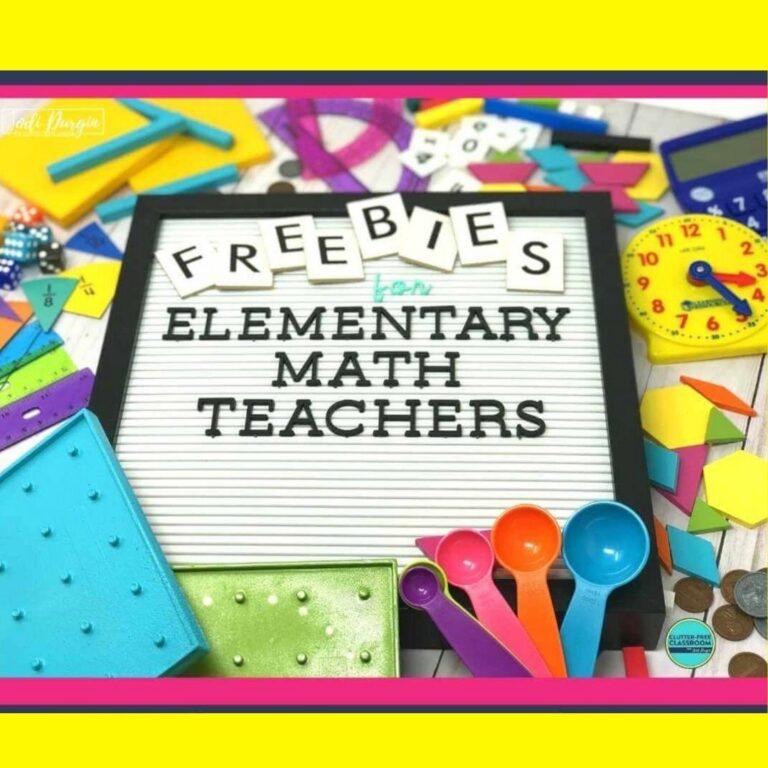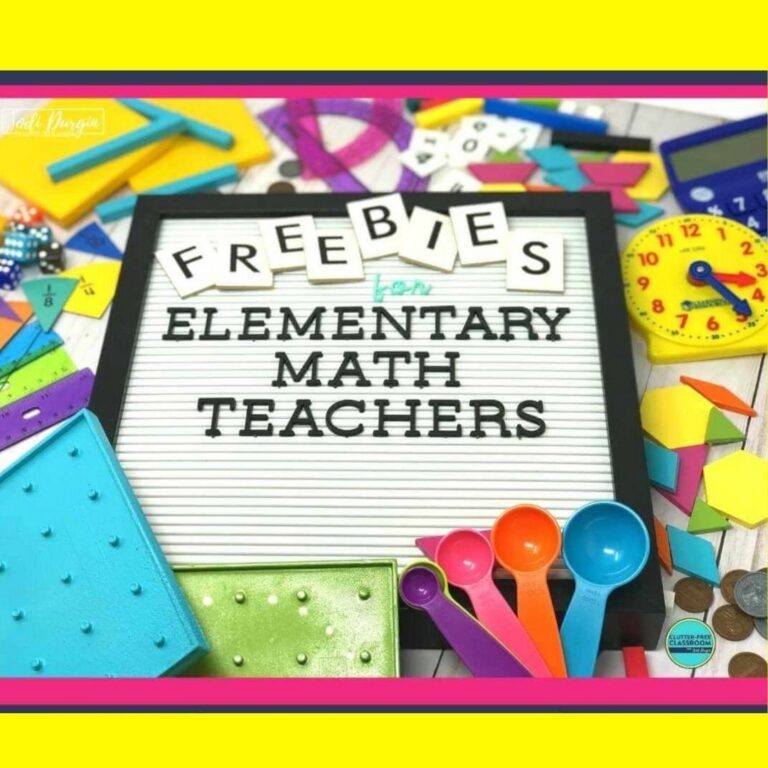If you are an elementary teacher looking for tips and ideas for how to teach area, then you found the right place! Learn what area is, why it’s important, what your students need to know, and get 5 helpful tips for teaching it in a fun and engaging way. Read all about how to teach area below!
What is Area?
Area is the amount of space covered by a two-dimensional shape. The formula for area is length times width (l x w). Students should develop a conceptual understanding of area before the formula is introduced. Be sure to keep this in mind when you teach area.
Why is Area Important?
It is important for students to learn area because there is a close relationship between area measurement and other mathematical concepts, such as multiplication, surface area and volume. As a result, area is a vital component of the mathematical curriculum. Without a strong understanding of what area means, students may face difficulty in understanding related concepts.
What Area Skills Do Students Need to Know?
Below are the Common Core and TEKs standards that relate to area. These define what students should be able to do by the end of the school year.
Common Core Standards
Below are the CCSS standards related to how to teach area.
3rd Grade
- Recognize area as an attribute of plane figures and understand concepts of area measurement. (3.MD.C.5)
- A square with side length 1 unit, called “a unit square,” is said to have “one square unit” of area, and can be used to measure area. (3.MD.C.5.A)
- A plane figure which can be covered without gaps or overlaps by n unit squares is said to have an area of n square units. (3.MD.C.5.B)
- Measure areas by counting unit squares (square cm, square m, square in, square ft, and improvised units). (3.MD.C.)
- Relate area to the operations of multiplication and addition. (3.MD.C.)
- Find the area of a rectangle with whole-number side lengths by tiling it, and show that the area is the same as would be found by multiplying the side lengths. (3.MD.C.7.A)
- Multiply side lengths to find areas of rectangles with whole-number side lengths in the context of solving real world and mathematical problems, and represent whole-number products as rectangular areas in mathematical reasoning. (3.MD.C.7.B)
- Use tiling to show in a concrete case that the area of a rectangle with whole-number side lengths a and b + c is the sum of a × b and a × c. Use area models to represent the distributive property in mathematical reasoning. (3.MD.C.7.C)
- Recognize area as additive. Find areas of rectilinear figures by decomposing them into non-overlapping rectangles and adding the areas of the non-overlapping parts, applying this technique to solve real world problems. (3.MD.C.7.D)
4th Grade
- Apply the area and perimeter formulas for rectangles in real world and mathematical problems. For example, find the width of a rectangular room given the area of the flooring and the length, by viewing the area formula as a multiplication equation with an unknown factor. (4.MD.A.3)
5th Grade
- Find the area of a rectangle with fractional side lengths by tiling it with unit squares of the appropriate unit fraction side lengths, and show that the area is the same as would be found by multiplying the side lengths. Multiply fractional side lengths to find areas of rectangles, and represent fraction products as rectangular areas. (5.NF.B.4.B)
TEKS
Below are the TEKS standards related to how to teach area.
3rd Grade
- Determine the area of rectangles with whole number side lengths in problems using multiplication related to the number of rows times the number of unit squares in each row; (3.6C)
- Decompose composite figures formed by rectangles into non-overlapping rectangles to determine the area of the original figure using the additive property of area; (3.6D)
- Decompose two congruent two-dimensional figures into parts with equal areas and express the area of each part as a unit fraction of the whole and recognize that equal shares of identical wholes need not have the same shape. (3.6E)
4th Grade
- Solve problems related to perimeter and area of rectangles where dimensions are whole numbers. (4.5.D)
5th Grade
- Represent and solve problems related to perimeter and/or area and related to volume. (5.4.H)
5 Tips for How to Teach Area
Below are 5 helpful tips for how to teach area to elementary students.
1. Read Aloud Picture Books that Teach Area
Reading aloud picture books is a great way to integrate literacy into your math block and present information in a different way. Our favorite picture books for teaching area are Perimeter, Area, and Volume by David Adler, Bigger, Better, Best! by Stuart J. Murphy and Sam’s Sneaker Squares by Nat Gabriel. Check out the full list of math picture books we recommend!
2. Offer Hands On Learning Experiences
Hands-on math experiences help students make connections, remember their learning, and develop a deep conceptual understanding of the content. You can make any lesson interactive and engaging by offering math manipulatives. Our favorite math manipulatives for teaching area are geoboards and 1 inch tiles.
3. Explicitly Teach Related Math Vocabulary
Teaching math vocabulary is essential for all students, but it is especially beneficial for students who speak English as a second language and students with learning differences. Key vocabulary terms for area are area, perimeter, formula, square foot, square inch, square meter, shaded, non-standard units, operation, plane figure, product, commutative property of multiplication, distributive property of multiplication, combined rectangle, addend, addition, area model, array, attribute, length, width, equation, expression, factor, multiply, dimensions, measure, space, side length, square unit, tiling, unknown, variable, square centimeter, overlap and gap.
4. Give Students Opportunities to Apply Area to the Real World
Learning becomes more meaningful when students understand how it connects to the real world. Students are more engaged and invested in their learning. Some examples of ways we use area in the real world are to determine how much carpet is needed to be purchased to cover a floor, how much it would cost to have a lawn mowed, and the space needed to put in a new trampoline. Project based learning and word problems are examples of opportunities for students to apply their learning to real world situations.
5. Encourage Parent Involvement
Parent participation in math is essential because it impacts students’ attitude toward math, proficiency levels this school year, and future success in their math education. Be sure to keep communication open with families and share ways they can support their children in their math learning. Some examples of ways they can practice area at home are they can work together to determine how much paint is needed to cover a wall, the size of a picture or the amount of space needed for a new couch.
In closing, we hope you found this information about how to teach area helpful!



